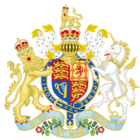Metropolitan Poor Act 1867 facts for kids
| Act of Parliament | |

|
|
| Long title | An Act for the establishment in the Metropolis of Asylums for the Sick, Insane, and Other Classes of the Poor, and of Dispensaries; and for the Distribution over the Metropolis of Portions of the Charge for Poor Relief; and for other Purposes relating to Poor Relief in the Metropolis. |
|---|---|
| Citation | 30 & 31 Vict. c.6 |
| Introduced by | Gathorne Gathorne-Hardy |
| Territorial extent | England and Wales |
| Dates | |
| Royal assent | 29 March 1867 |
| Other legislation | |
| Repealed by | Local Government Act 1929 |
|
Status: Repealed
|
|
The Metropolitan Poor Act 1867 was an important law passed in the United Kingdom. It was one of the first big changes that slowly separated healthcare for poor people from other types of help they received under the old Poor Law system. This law also created a new group called the Metropolitan Asylums Board to manage these changes.
Contents
What Was the Metropolitan Poor Act?
The Metropolitan Poor Act of 1867 was a law designed to improve how poor people were cared for in London. Before this Act, the system for helping the poor, known as the Poor Law, often mixed medical care with general support. This new law aimed to create special places for sick or mentally ill poor people.
How Did the Act Change Things?
The Act made it possible to collect a single "Metropolitan Poor Rate" (a type of tax) all across London. This money was used to help the poor. The area where this tax was collected was defined by the Metropolitan Board of Works, which was like London's city council at the time.
The government group in charge of helping the poor, called the Poor Law Board, was given the power to create special districts. In these districts, they could build "Asylums" (which were like hospitals or care homes) for sick, mentally ill, and other poor people.
Creating the Metropolitan Asylums Board
Soon after the Act was passed, on May 16, 1867, an official order was signed. This order brought together all the different local areas in London into one big "Metropolitan Asylum District." This district was set up to help poor people who were sick with diseases like fever or smallpox, or who had mental health issues.
To manage this new system, the Metropolitan Asylums Board was created. This board had 60 members. Most of them (45 members) were chosen by the local groups that managed poor relief. The other 15 members were chosen by the central government's Poor Law Board.
Helping Nurses and Parishes
The Act also made a change to an older law from 1834. This change allowed the government to have more control over certain local areas (called parishes) that had previously been left out of the main Poor Law system. These ten parishes included places like St James Clerkenwell, St George Hanover Square, and St Marylebone.
Another important part of the Act was that it allowed for the training of new nurses. These "probationary nurses" would train for a year in the new sick asylums. Over time, these trained nurses started to take over from untrained poor people who had previously done nursing work. This helped to improve the quality of care.

